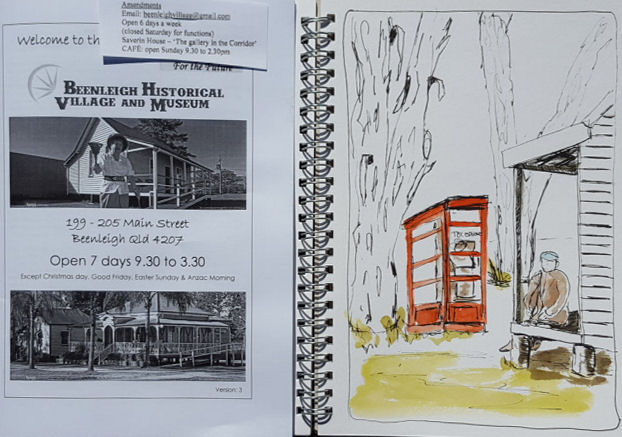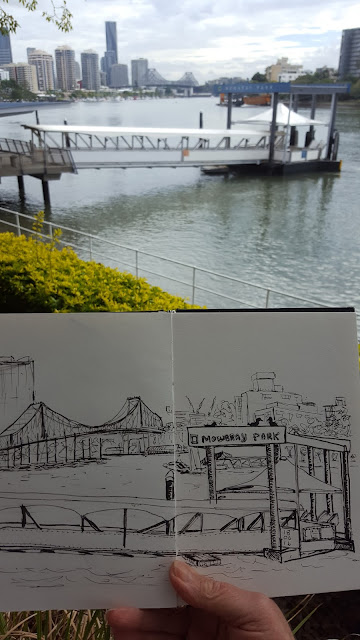Fun day, four Brisbane Urban Sketchers went to the village
to sketch. It was a gorgeous day. I did a quick warmup sketch then had
a play with my watersolouble graphites.
The Carroll House at Beenleigh Historical Village and Museum.
Arches 140lb wc paper and watersoluble graphite.
Arches 140lb wc paper and watersoluble graphite.
This was my warmup. Deirdre sketching the railway Museum, just inside the main entrance to the Beenleigh Historical Village
Holcroft A5 225gm sketchbook pen and watercolour
Holcroft A5 225gm sketchbook pen and watercolour









































